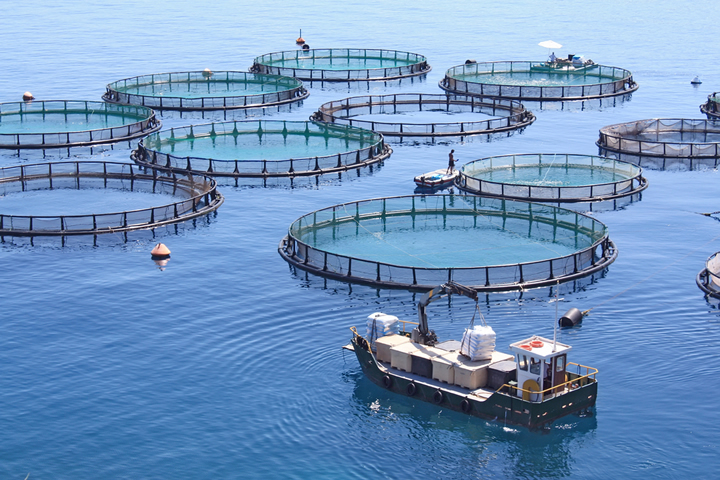Aquaculture Market Size to Exceed USD 360.6 Billion by 2032: A Booming Sector

The global aquaculture market is on track to surpass USD 360.6 billion by 2032, driven by rising demand for seafood, sustainability concerns, and technological advancements in farming practices. With the ever-growing global population and increasing food consumption, aquaculture, which involves the breeding, rearing, and harvesting of fish, shellfish, and aquatic plants, has emerged as a key solution for meeting the global demand for protein. Let’s explore the factors fueling this rapid growth and what the future holds for the industry.
Key Growth Drivers
-
Rising Demand for Protein
The global population is projected to reach 9.7 billion by 2050, which will put tremendous pressure on food production systems. As a result, seafood has become an essential source of high-quality protein. Aquaculture offers a sustainable solution to bridge the gap between growing demand and the limitations of wild fisheries, which are increasingly facing overfishing and environmental degradation.
-
Sustainability and Eco-Friendly Practices
Sustainability has become a focal point in food production. Overfishing has led to a decline in wild fish stocks, causing more consumers and businesses to look for sustainable alternatives. Aquaculture can produce seafood in a more controlled environment, reducing the impact on wild populations. Moreover, improvements in feed efficiency and water management in aquaculture have also made the industry more environmentally friendly, driving its popularity.
-
Technological Advancements
Innovation in aquaculture technologies has also been a significant contributor to its growth. From recirculating aquaculture systems (RAS) to biosecure facilities, technology has allowed the industry to improve yields, reduce disease outbreaks, and optimize resource use. The use of advanced breeding techniques, automation, and data analytics has also improved production efficiency.
-
Growing Consumer Awareness
Consumers are becoming increasingly health-conscious, seeking out foods rich in Omega-3 fatty acids and other essential nutrients found in fish and shellfish. With aquaculture's ability to meet these nutritional needs while maintaining a focus on sustainability, it has become a more attractive option for both consumers and retailers.
Regional Dynamics
The aquaculture market is growing at a rapid pace across multiple regions:
- Asia-Pacific: The Asia-Pacific region dominates the aquaculture market, accounting for the majority of global production. Countries like China, India, and Vietnam are at the forefront, driven by both local consumption and export demands. China alone accounts for over 60% of global aquaculture production, largely due to its technological capabilities and government support for the sector.
- North America & Europe: In North America and Europe, the aquaculture industry is also seeing growth, though on a smaller scale compared to Asia-Pacific. The increasing demand for organic and sustainable seafood in these regions has encouraged investments in technologically advanced, eco-friendly aquaculture practices.
- Middle East & Africa: Aquaculture in the Middle East and Africa is projected to grow significantly in the coming years, driven by the region's rising demand for seafood, improved farming techniques, and government initiatives promoting food security and diversification away from traditional industries like oil.
Challenges in the Aquaculture Industry
Despite the positive outlook, the aquaculture industry does face challenges:
-
Environmental Concerns
While aquaculture has made strides in reducing its environmental impact, concerns about water pollution, habitat destruction, and the use of antibiotics and chemicals still persist. Proper regulations and innovations are necessary to address these issues and ensure sustainable growth.
-
High Operational Costs
Setting up an aquaculture farm can be capital-intensive due to the need for high-tech infrastructure, specialized equipment, and skilled labor. The costs of feed, energy, and maintenance can also affect profitability. However, continuous innovation in technology and feed efficiency may help reduce these costs in the long term.
-
Supply Chain Disruptions
As seen during the COVID-19 pandemic, disruptions in global supply chains can impact the aquaculture sector. Ensuring resilient supply chains for feed, equipment, and logistics will be essential for the industry’s sustained growth.
The Future of Aquaculture
The future of the aquaculture market looks promising as the industry continues to evolve to meet global food demands sustainably. Innovations such as integrated multi-trophic aquaculture (IMTA), which combines species that benefit each other environmentally and economically, and offshore aquaculture, which expands farming into open waters, are expected to drive further growth. As consumers and businesses alike prioritize sustainability, aquaculture’s role in global food security will only strengthen.
In conclusion, the aquaculture market is poised for robust growth, with its value expected to exceed USD 360.6 billion by 2032. By embracing sustainable practices, leveraging technology, and meeting the world's protein needs, aquaculture has solidified its place as a key player in the future of food production.
Source: https://www.gminsights.com/industry-analysis/aquaculture-market
Comments (0)
This post does not have any comments. Be the first to leave a comment below.
Featured Product

